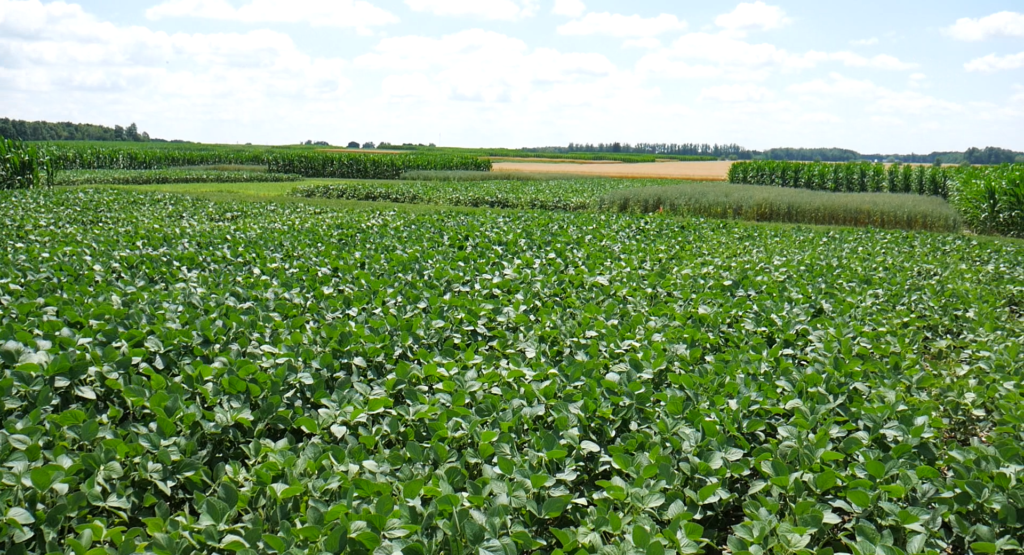First published in Farmtario: https://farmtario.com/crops/lasting-impact-the-penalty-of-poor-crop-rotations/
This article is part one of a three-part series highlighting lessons learned from two long-term crop rotation experiments at the Ontario Crops Research Centres in Elora and Ridgetown.
Howard Buffett authored a book a few years back with the title, “40 Chances”. The title came from a shop talk Buffett attended where a speaker remarked that the average farmer only gets 40 chances to grow a crop in their career.
Slicing it that way prompts some sober reflections on how we manage our farmland and our crops. How can we be sure that we’re making the most of our 40 chances?
Long-term field experiments are invaluable in this regard. And this year, 2020, happens to be the 40th year of a long-term crop rotation experiment in Elora.
Forty comparisons of common corn-based crop rotations in Ontario – everything from continuous corn, to complex rotations with small cereals and legume cover crops, to Ontario’s most common crop rotation: corn-soybean.
Both this trial and a 25-year-old sister site in Ridgetown, overseen by Dr. David Hooker, serve as platforms for Guelph researchers, and others from across the country and around the globe, to study and compare the long-term impact of crop rotation, tillage systems, nitrogen applications, and cover crop decisions on agronomic, soil health, and environmental indicators.
Which brings us to the question: What are the long-term implications of our land base being predominantly in corn-soybean?
“Resilience cannot be built overnight. It is important for growers to start building soils now to achieve production potentials in the future.”
Dr. David Hooker
Bill Deen, an associate professor at the University of Guelph, notes that after 40 years at Elora, the corn-soybean rotation is associated with “the poorest soil health, lowest yield potential, lowest yield stability, and the least resilience to drought.” And it’s a similar story at Ridgetown, despite having a different soil type and climate.
In a paper published by Gaudin et al. in 2015, Deen and Hooker’s teams demonstrated that not only were corn and soybean yields significantly lower in a corn-soybean rotation on average, but the yield gap widened in drought years, compared to a corn-soybean-wheat rotation with a red clover cover crop.
“We want to move forward with a system that is resilient” – able to hold up under stress – Deen says, “and we have data from two environments to show that corn-soybean is not that system.”
And the penalty of poor rotation is increasing.
When the experiment at Elora started in 1980, the yield potential of corn was half of what it is now. Similarly, the amount of water needed to produce that yield was half of what it is now – assuming water use efficiency hasn’t greatly changed.
Deen and Hooker hypothesize that water, not genetics or nitrogen, is becoming a major limiting factor to yield. “If higher grain yields require more water, then the frequency of moisture deficits causing yield loss may increase in the future,” especially if climate change leads to more droughts, explains Hooker.
Deen acknowledges that since a corn-soybean rotation has been a popular crop rotation in Ontario, it must be perceived by growers to be the most profitable. He even concedes that it might have been in the past. But with the increasing penalty of poor rotation, he doubts it will be most profitable in the future.
When you add up all the benefits: higher corn and soybean yields, free nitrogen from underseeding red clover into winter wheat, more time to plant corn and soybean since a third of farm acres are in wheat, “there’s a lot of value with a corn-soybean-wheat rotation,” says Hooker.
“Decisions on whether to include wheat in a corn-soybean rotation need to consider the impact on the whole farm system, across all enterprises, rather than considering the economics of the wheat enterprise alone.”
Many growers recognize this. Roger Buurma, who farms in Lambton County, first encountered Hooker and Deen’s research over a decade ago at a Ridgetown Diagnostic Day. Working with his father, they’ve structured much of their operation around winning with wheat so they can reap the rewards in the corn and soybean crop.
“If it’s feasible, and if the data warrants going a certain direction, then go with it,” Buurma says.
Baling straw provides another revenue stream for Buurma. He compensates for the organic matter removal with high–organic matter biofertilizers and cover crops, which market for less than the value of straw.
Brad Nimijohn, a grower from Flamborough who farms lighter textured soils also knows the benefits of good rotation for increasing farm resilience.
“Our soils are drought-prone to begin with. We’re always planning for a drought,” says Nimijohn. Deen and Hooker’s research convinced him of the need to keep wheat and cover crops in the rotation to insure for this.
The evidence for greater resilience with diverse rotations is mounting. Recently the results from the Gaudin et al. paper were confirmed in a meta-analysis including 11 similar long-term rotation trials across North America.
“Resilience cannot be built overnight,” says Hooker. “It is important for growers to start building soils now to achieve production potentials in the future.”
This research is funded by Grain Farmers of Ontario (GFO) and the Ontario Ministry of Agriculture, Food and Rural Affairs (OMAFRA), through the Ontario Agri-Food Innovation Alliance. The Ontario Crops Research Centres at Elora and Ridgetown are two of 15 research stations owned by the Agricultural Research Institute of Ontario and managed by the University of Guelph through the Ontario Agri-Food Innovation Alliance, a collaboration between the Ontario Government and the University of Guelph.


